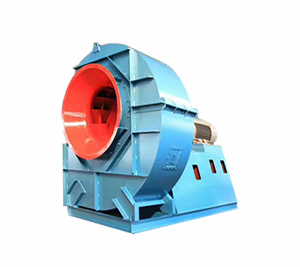
Explosion-proof centrifugal fans are widely used, whether it is building ventilation or production equipment, and can be divided into forward centrifugal fans and backward centrifugal fans. Different structures determine different performance and use. The following editor will introduce the difference between the forward explosion-proof centrifugal fan and the backward explosion-proof centrifugal fan.
The backward explosion-proof centrifugal fan is composed of an external rotor asynchronous motor, a plastic/aluminum impeller, etc. The low temperature rise of the motor has the advantages of ventilation, heat dissipation and self-cooling, which extends the reliability of the life of the fan.
The explosion-proof centrifugal fan is a backward curved impeller, which has the characteristics of compact structure, large air volume, high static pressure, small oscillation, low noise, and convenient installation. It is mainly used for purification workbenches, purification units, ventilation duct dust removal, purification air conditioning systems, environmental maintenance and pollution control and other refrigeration equipment supporting work. The forward explosion-proof centrifugal fan is composed of an external rotor motor, a plastic forward curved or metal forward curved impeller, and a plastic or metal volute. It has the characteristics of compact structure, small size, light weight, and convenient device use. It is universally suitable for automatic use. Forced ventilation of control equipment and electronic equipment, and indoor pipeline dust removal, exhaust, heat removal, environmental maintenance, air purification and pollution control and other places.
The forward and backward explosion-proof centrifugal fans mainly refer to the different blades of the device fans. The forward type is generally called a blower, and the backward type is generally called an induced draft fan. The difference is the length of the impeller crosspiece and the impeller edge.
The forward direction is parallel to the edge of the impeller, and the exit angle of the impeller is greater than 90 degrees. The forward impeller is also called the forward impeller. The forward impeller is mostly high-pressure.
Then the direction is not parallel to the impeller, and the length is a few centimeters or a few millimeters from the edge of the impeller. It means that the exit angle of the impeller is less than 90 degrees. The backward impeller is also called the backward impeller.
There are three differences:
1. Power
The static pressure head used to restrain the resistance of the system, the forward centrifugal fan is smaller than the backward centrifugal fan.
Since the channel in the backward blade fan is gradually expanded, its hydraulic loss is smaller than that of the forward type.
Therefore, the power of the forward centrifugal fan is lower than that of the backward centrifugal fan.
2. Energy consumption
Since the power of the forward centrifugal fan is lower than that of the backward centrifugal fan, its power consumption is greater than that of the backward centrifugal fan.
3. Noise
The running noise of the forward centrifugal fan is greater than that of the backward centrifugal fan.
